Wheat Rate Today in Pakistan June 2025
The Wheat Rate Today ranges from Rs, 2,200-2,500 for each 40kg.
1 KG Wheat Price in Pakistan Today ranges between Rs, 53-58 PKR Prices may vary depending on the region. Both farmers and consumers pay attention to these wheat news price updates.
40 KG Wheat Price in Pakistan T`oday 2025
| Month | Price |
|---|---|
| JANUARY | Rs, 2700 to 3,200 |
| FEBRUARY | Rs, 2,700 to 2,900 |
| MARCH | Rs, 2,200 to 2,600 |
| APRIL | Rs, 2,000-2,200 |
| MAY | 2,200-2,500 |
| JUNE | 2,200-2,500 |
| JULY | |
| AUGUST | |
| SEPTEMBER | |
| OCTOBER | |
| NOVEMBER | |
| DECEMBER |
Read More
Wanda Rate Today in Pakistan
Prices indicate daily allowances and how much money is put into agriculture spending. The gandam rate today illustrates how supply chains and the weather and the government work together or apart into determining Pakistan’s food economy.
Wheat Rate in Punjab 2025
| Cities | Minimum Price | Maximum Price |
|---|---|---|
| Lahore | Rs. 2620 | Rs. 2820 |
| Rawalpindi | Rs. 2640 | Rs. 2880 |
| Dera Ghazi Khan | Rs. 2600 | Rs. 2820 |
| Hafizabad | Rs. 2629 | Rs. 2840 |
| Gujranwala | Rs. 2650 | Rs. 2870 |
| Sialkot | Rs. 2680 | Rs. 2900 |
| Faisalabad | Rs. 2630 | Rs. 2850 |
| Arifwala | Rs. 2650 | Rs. 2870 |
| Multan | Rs. 2670 | Rs. 2900 |
| Ali Pur Chatha | Rs. 2600 | Rs. 2820 |
| Nankana Sahib | Rs. 2600 | Rs. 2810 |
Wheat Rate in Sindh 2025
| Cities | Minimum Price | Maximum Price |
|---|---|---|
| Karachi | Rs. 2690 | Rs. 2900 |
| Hyderabad | Rs. 2650 | Rs. 2880 |
| Larkana | Rs. 2600 | Rs. 2820 |
| Nawab Shah | Rs. 2620 | Rs. 2840 |
| Sukkur | Rs. 2630 | Rs. 3860 |
| Malir Cantonment | Rs. 280 | Rs. 2880 |
| Jacobabad | Rs. 2610 | Rs. 2820 |
| Jamshoro | Rs. 2620 | Rs. 2840 |
| Tando Adam | Rs. 2610 | Rs. 2830 |
| Benazir Abdad | Rs. 2630 | Rs. 2870 |
Everyone is affected by a raise or fall in the wheat price in Pakistan. This impacts the families purchasing flour as well as the businessmen monitoring the international markets. The latest updates of wheat rate in Pakistan showcase the equilibrium that exists between local output and foreign input.
To find the most reliable wheat price today, and for the following days, you need to check the official paper and region market reports as often as possible.
Key Takeaways
- Current wheat rate in pakistan today averages Rs. 2,200 per 40kg bag.
- Weather and policy changes drive fluctuations in kanak price in punjab 2025 today trends.
- Track wheat news for updates on supply, demand, and government interventions.
- Gandam rate today impacts bread prices and food affordability nationwide.
- Regional differences exist in wheat price in pakistan 2025 due to logistics and harvest yields.
A Comparison of Rabi Crops between India and Pakistan
Features India & Pakistan
- Major Rabi Crops Barley, Mustard and Potato The following are the names of these products: Wheat, Mustard (gram), Potato, Onion.
- Primary growing regions Punjab, Haryana, UP, MP, Rajasthan Punjab (Pak), Sindh, KPK
- Sources of Irrigation Canals, Tube-wells, Rain-fed (partial) The Indus River System, Tube-wells
- Importance of Economic Export surplus of wheat = staple food Wheat: A major food crop
Differences between Cultivation
- Water Dependency:
- India: Diversified irrigation (canals and groundwater).
- Pakistan is heavily dependent on the Indus River canals.
- Government Policies:
- India Minimum Support Price (MSP) for Wheat & Pulses.
- Pakistan: Subsidies for Wheat Farmers on Fertilizers & Seeds
- Climate Challenges:
- India – Late frost affects wheat and mustard in North India
- Pakistan: Water shortages due to Indus River disputes.
Understanding Pakistan’s Wheat Market in 2023
Wheat plays an important role in the agriculture of Pakistan. To understand the wheat market and the prevailing rates, it is imperative to start with its global significance. Wheat is one of the main staple crops in Pakistan, where more than twenty five million tons are produced annually, cementing Pakistan’s status as the world’s fifth largest producer of wheat. Not only is this crop important from a local perspective, but also from an international one.
Pakistan’s Position in Global Wheat Production
Pakistan sits within the top 5 producers of wheat in the world, sustaining near 90% of its needs domestically. This self-reliance is important in ensuring the stability of the gandum rate in Pakistan and shielding consumers from the volatility of other global prices. Nevertheless, there is always room for improvement and factors such as climate changes and policy alterations can greatly affect yields.
Key Factors Driving the Wheat Economy
- Domestic Demand: A population of over 130 million relies on wheat as a main source of food, influencing the today wheat rate in Pakistan.
- Climate: Wheat rates may change with time depending on the current climate and health of crops during the monsoon season.
- Government Policies: The emergence of new trends in the market of Pakistan wheat rate updates is majorly influenced by the government’s minimum support prices commodities are sold at/freed from.
Market Structure and Key Players
| Stakeholder | Role |
|---|---|
| Pakistan Agricultural Storage and Supply Corporation (PASSCO) | Manages storage and distribution of wheat stocks. |
| Private Traders | Engro Agri and Allied Mills buy/sell wheat, affecting wheat market rates pakistan. |
| Farmer Groups | Millions of small-scale growers supply 70% of the crop. |
These groups work together to shape the wheat rate landscape. They balance supply chains and market stability. Knowing this ecosystem helps track prices accurately.
Wheat Rate in Pakistan Today: Latest Price Updates
Get the latest current wheat prices in pakistan in major areas. These updates help farmers, traders, and buyers plan their deals. Here’s a detailed look at today’s prices and trends.
Current Prices per 40kg Bag
The 40 kg wheat price in pakistan today has seen a small change from last week. Here’s what the markets say:
- Karachi: PKR 2,300–2,600 per 40kg bag
- Lahore: PKR 2,150–2,450 per 40kg bag
- Islamabad: PKR 2,400–2,650 per 40kg bag
Per Kilogram Rates in Major Cities
Looking at the 1 kg wheat price in pakistan today, here’s what you pay per kilogram:
- Karachi: PKR 55–57/kg
- Lahore: PKR 53–55/kg
- Peshawar: PKR 54–56/kg
- Quetta: PKR 56–58/kg
Week-over-Week Price Comparison
Prices have stayed the same in most places. The main changes are:
- 2% increase in Lahore’s wheat cost per kg from last week
- 1% drop in Karachi’s today wheat price in pakistan from seven days ago
- The pakistan wheat rate today shows little change across provinces
Regional Variations in Wheat Prices Across Pakistan
The variation from one region to another in Pakistan is rather drastic. The two reasons contributing to this are wheat yield along with local facilities available. As is well known, Punjab happens to be the largest contributor to Wheat prices in Pakistan, thus the pricing tends to be more economical. But regions such as Balochistan seem to impose higher charging due to the scarcity and distance needed for delivery.
- Punjab: The stable production serves wheat prices pakistan stabilizes, weighing in between 1,600 to 1,800 PKR per 40kg bag.
- Sindh: The current cost of wheat, which is estimated between 1,900 and 2,100 PKR, suggest coastal consumption of the grain along with storage issues.
- KPK: Prices of wheat have surged to between 2,000 and 2,200 PKR due to the high cost of transport associated with movement through mountainous regions.
- Balochistan: Increased scarcity of wheat suggests higher prices, reaching and exceeding 2,300 PKR in more remote areas.
Urban areas such as Karachi and Lahore do sell wheat at higher prices than the countryside because of how the local value chains function. Farmers in rural Sindh complain, “Final prices of wheat in Pakistan rise by 10–15% due to delays during transport.” Advices is to always check what prices of wheat in Pakistan are before selling or buying in the marketplace. These imbalances in regions are necessary to be adjusted by traders and policymakers in Pakistan.
Main Causes of Current Wheat Rates in Pakistan
wheat price per kg pakistan 2025 today emanate from a mix of policy, weather features and international changes. Farmers as well as buyers of Pakistan’s agricultural output need to observe macroeconomic variables to forecast the movement of wheat rate trends in the agricultural economy of Pakistan.
Government Interventions and Its Policies
Wheat prices react to government intervention. It varies largely because of the evolving tension between government and the agricultural producers, namely from minimum support price (MSP) such as ensuring payment to farmers. For example, there were attempts to raise MSP in 2022-2023 hoping farmers would also increase the supply and price would stabilize. Seed and fertilizer subsidies also modify the MSP’s mark, which is set via governing policy and changes the sown area.
Weather and Growing Conditions
Unpredictable weather conditions negatively impact harvests. In 2022, Wheat production droughts decreased output, while increasing prices. Farming in Pakistan has become increasingly contingent on rainfall that is both unpredictable and suboptimal. Specialists monitor monsoons, hoping to make educated guesses about future supplies.
Import/Export Dynamics
Local supplies are affected by trade policies. Recent import stats are further proof of this.
| Year | Imports (MT) | Exports (MT) | Price Impact |
|---|---|---|---|
| 2021 | 500,000 | 1,200,000 | Stable |
| 2022 | 800,000 | 800,000 | Rise due to demand |
| 2023 | 700,000 | 950,000 | Fluctuations |
Global Market Influences
The wheat price per kg pakistan 2025 trends for wheat globally can not be ignored. Domestic prices are greatly influenced by the local cost of wheat and the American and Russian prices. Changes in currency impact the costs of importing, which cause trend changes to take place wheat rate trends in Pakistan.
Pakistan Wheat Rate Comparison with International Markets
The recent reports of wheat rate in the Pakistan market highlight the changes in local prices against international wheat rate today. The differences that come about are due to supply chains and trade policies. Farmers a traders from Pakistan get international 1 kg wheat price in pakistan today and that is how they decide on profit margins.
Price Differences with Major Wheat Exporting Countries
Competitors like America, Russia, and India control the global cost of wheat. Their pricing strategy includes economies of scale.
- United States: $0.29/kg thanks to advanced farming tech and strong export deals.
- Russia: $0.24/kg, boosted by subsidies and large-scale production.
- India: $0.27/kg, supported by strong regional demand.
“Fluctuations in gandom price trends globally directly impact Pakistan’s domestic pricing strategies,” noted a recent market analysis.
Effects of Local Prices on Global Prices:
Russia’s 2023 implemented restrictions on exporting certain goods or the Ukraine battle month delays impacts costs. For instance:
- Supply chain delays raise wheat price per kg pakistan 2025 update pakistan estimates.
- Trade policies in major exporters sway import costs.
- Climate events in key producing nations alter the wheat international price.
Pakistan’s market needs to manage the ratio of locally produced wheat to imported wheat in order to achieve a balance. Being mindful of these aspects allows businesses to stay proactive in times of anticipated price increases.
Wheat Price Trends: Historical Analysis and Future Projections
The past five years have brought increases as well as declines in prices for what is arguably one of the most important food products: 1 kg wheat price in pakistan today 2025 trend. The price fell 15 percent in 2020 following a bumper harvest, but increased again in 2022 owing to droughts. Farmers and traders keep an eye on wheat market price today to strategize their operations.
“Climate changes and political changes within the region will determine the price of wheat in the next ten years,” the Pakistan Agricultural Council said.
Analysts predict that the wheat rate update pakistan might rise between 8 to 12 percent by the year 2025. This may stem from increased fertilizer costs and world supply chain problems. This is what is expected:
- Higher current wheat prices pakistan during lean harvest seasons
- Stable prices post-harvest if rainfall improves
- Government subsidies to buffer today wheat rate for consumers
These trends could always be altered by some risks such as erratic monsoons or trade bans. 1 kg wheat price in pakistan today 2025 update alerts are important for farmers. Possible inflation prepares buyers for the change. Changes to wheat rate in pakistan today need constant attention.
How to Track and Monitor Wheat Rates in Pakistan
It’s crucial for farmers, traders, and consumers to keep up with wheat market updates and 1 kg wheat price in pakistan today 2025 update trends. Here’s how to find reliable sources for the current wheat rate in pakistan and latest wheat rate updates.
Official Government Resources
Government websites offer verified data on wheat rate in pakistan today. Start with:
- Ministry of National Food Security & Research: Visit their portal for best wheat prices in pakistan and policy announcements.
- Pakistan Agricultural Commodities Exchange (PACE): Daily price charts and regional comparisons.
- Pakistan Bureau of Statistics: Monthly reports on production and pricing trends.
Impact of Wheat Rates on Pakistan’s Economy and Food Security
Rising 1 kg wheat price in pakistan today 2025 affect Pakistan’s economy deeply. The wheat rate and gandam rate today impact bread prices and farmer earnings. These changes influence inflation and food access nationwide.
Effects on Inflation and Consumer Prices
Higher wheat prices lead to higher inflation in Pakistan. A 10% increase in wheat prices in pakistan can raise overall inflation by 0.5%. When the daily wheat rate pakistan goes up, bread and flour costs soar.
For instance, a 50 rupee increase in a 40kg bag’s price can raise roti costs by 12% in cities. Businesses try to adjust, but families still struggle.

Food Security Implications
Big jumps in wheat rate trends threaten food for millions. Low-income families spend 30% of their income on wheat-based foods. Programs like Ehsaas Kafaalah offer subsidized rations, but 15% of rural households still face shortages.
“Volatility in wheat prices risks reversing food security gains,” warned a 2023 World Bank analysis.
Keeping wheat rates stable is crucial for protecting vulnerable communities.
Farmer Livelihood Considerations
Farmers struggle when wheat prices in pakistan fall below production costs. High fertilizer costs and climate challenges squeeze profits. Many rely on government support prices to survive.
Without fair rates, fewer farmers will grow wheat. This risks future supplies.
Conclusion: Navigating Pakistan’s Wheat Market
Pakistan’s wheat market in 2023 is shaped by global trends and local policies. Farmers, traders, and consumers can use wheat rate analysis to adapt to price changes. Keeping up with the wheat market update in Pakistan helps make better decisions.
Farmers should check the wheat rate in Pakistan today through government portals. This helps them plan planting and sales. Traders can use wheat rate forecast data to manage their inventory during price changes. Consumers can find the best deals by comparing wheat market rates across regions.
Policymakers need to balance international wheat rate today markets to avoid shortages. Watching global trends affects local wheat market rates. Regular checks of wheat prices in Pakistan through platforms like the Pakistan Bureau of Statistics are crucial.
Farmers can analyze weather reports and policy changes to improve yields. Businesses can anticipate trends using market reports. Households can budget with current rates from provincial agricultural departments.
Looking ahead, wheat rate forecast models suggest volatility may continue. This is due to climate shifts and export demands. Subscribing to official alerts or industry newsletters keeps everyone updated.
Whether you’re a producer, buyer, or policymaker, using wheat market analysis tools is key. The wheat market in Pakistan is dynamic, and staying vigilant ensures stability for all.
FAQ
What is the current price of 40 kg wheat in Pakistan today?
The price of a 40 kg bag of wheat in Pakistan 2025 varies. It’s usually between PKR 3,000 to PKR 3,500. This depends on the local supply and demand.
How does the wheat rate today compare to last week’s prices?
Today, wheat prices have gone up by about 3% from last week. This shows recent changes in the market.
What factors influence the wheat price in Pakistan 2025?
Several things affect wheat prices in Pakistan. These include government policies, international wheat rate today, weather, local production, and demand.
Where can I find the latest updates on wheat price trends in Pakistan?
You can get the latest wheat price updates from official government sites, market reports, and agricultural newsletters.
How does the wheat price in Pakistan 2025 compare to international rates?
Right now, wheat prices in Pakistan are lower than in major exporters. This is due to local market conditions and production costs.
What is the significance of wheat prices for the Pakistani economy?
Wheat prices are very important for Pakistan’s economy. They affect inflation, food security, and farmers’ livelihoods. It’s a key crop in the country’s agriculture.
Are there regional variations in wheat prices within Pakistan?
Yes, wheat prices vary across Pakistan. This is because of local production, transportation costs, and demand.
What resources can I use to monitor wheat rates effectively?
To track wheat rates well, use government publications, online market sites, and subscription services. They offer real-time updates and analysis.
How do weather conditions impact wheat prices in Pakistan?
Weather, like rain and temperature, affects wheat production. This leads to price changes based on crop yield and growing conditions.
What are the expected trends for wheat prices in the coming months?
Experts think wheat prices might go up. This is because of global demand and possible local production issues. So, watching future price trends is key.
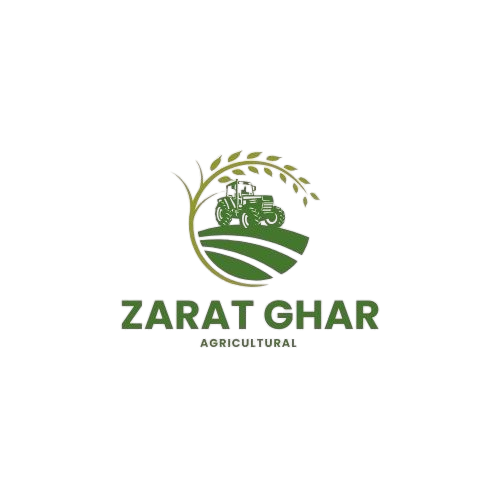
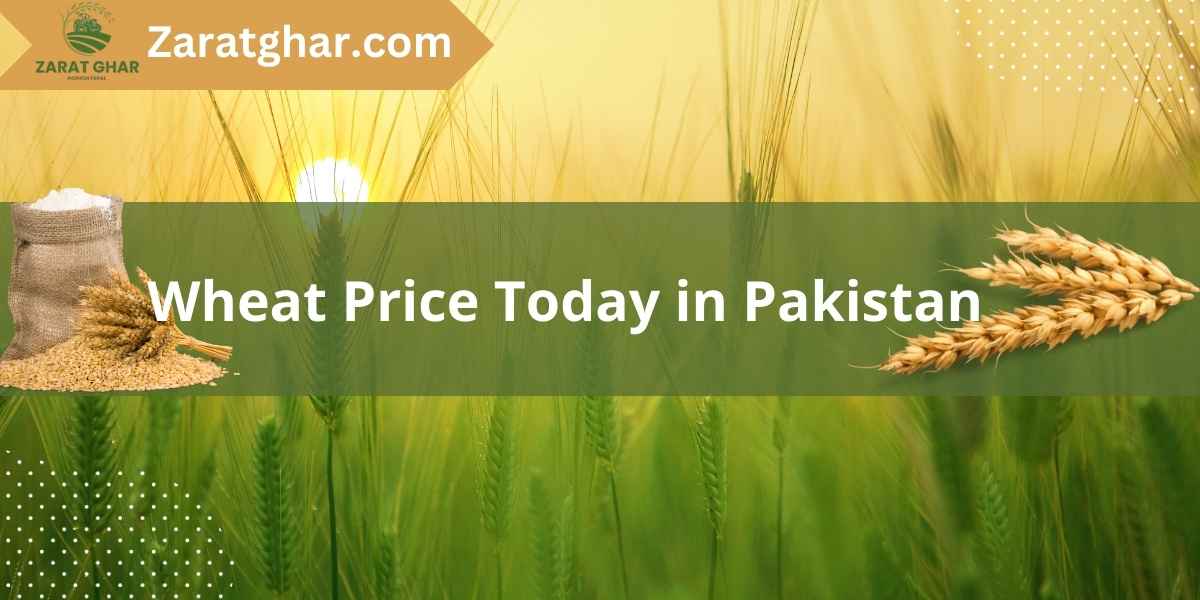


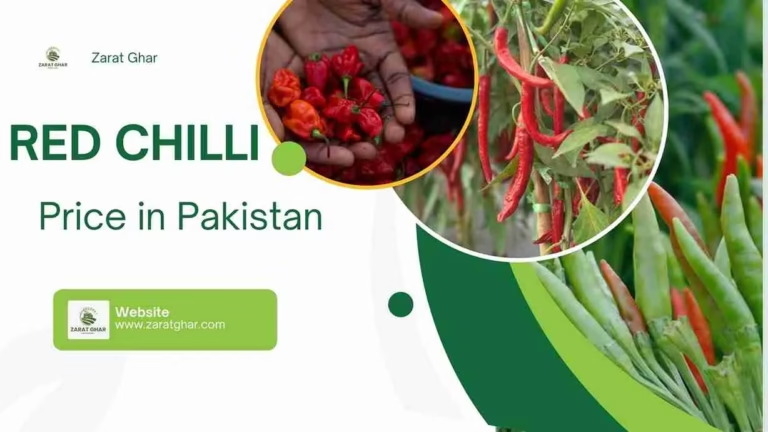
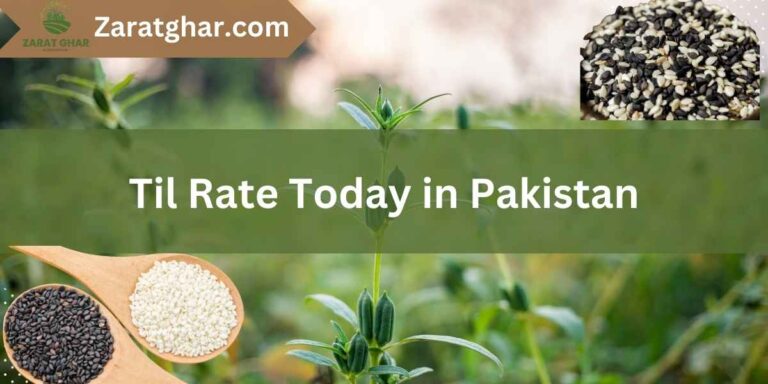

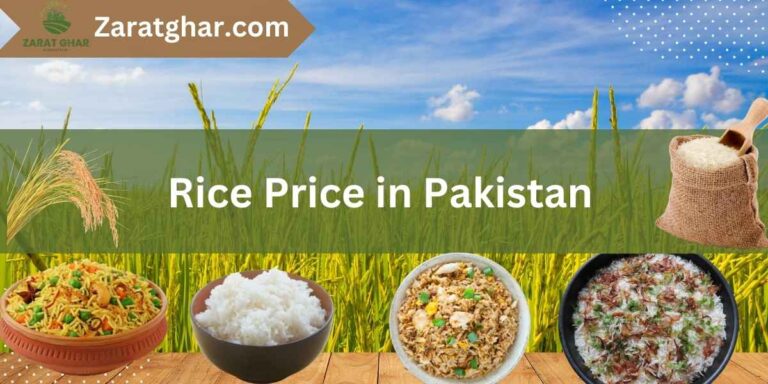
One Comment